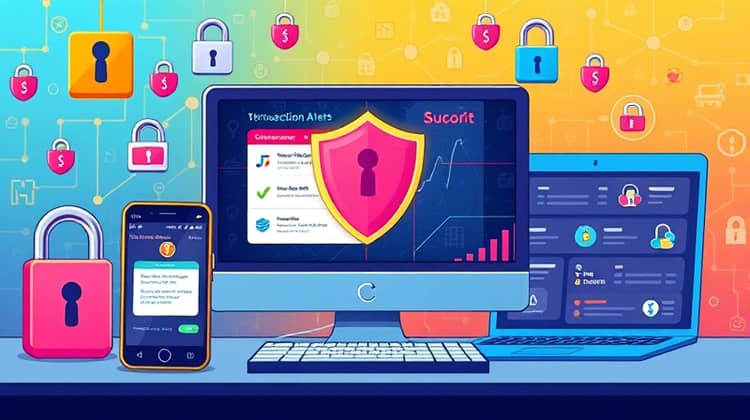Losing a credit card can be a stressful experience for anyone. It’s vital to remain calm and take immediate actions to minimize potential damage and ensure that your financial information remains secure. This guide will walk you through the necessary steps to report a lost or stolen credit card and protect your account.
Regardless of whether the card was lost or stolen, the same procedures apply. Taking swift action helps to prevent unauthorized transactions from occurring and mitigates any potential loss. By following each step outlined in this article, you can regain control of your finances and come out of this situation without significant issues.
From gathering information to monitoring your account, every step is crucial in handling the aftermath of losing your credit card. Let's dive into the necessary steps you should take to protect yourself.
Step 1: Stay Calm and Act Quickly

When you realize that your credit card is lost or stolen, the first thing you need to do is stay calm. Panicking can lead you to make hasty decisions that may complicate the situation further. Take a deep breath and focus on what needs to be done immediately to ensure your account's security.
Acting quickly is essential when dealing with a lost or stolen credit card. The sooner you report the incident to your card issuer, the better your chances of avoiding unauthorized transactions and limiting your potential liability. Many credit card companies have a zero liability policy for unauthorized charges, but this typically only applies if you report the loss promptly.
Your first instinct might be to search for the card in your belongings, but it’s crucial to remember that the best course of action is to prepare to contact your card issuer immediately. Before you do anything else, gather the information you'll need to streamline the reporting process.
Step 2: Gather Necessary Information

To expedite the reporting process, make sure you have the following information handy: your credit card number (if you have it), your identification information, and any recent transactions that might seem unusual. This information will help the representative assist you more effectively.
Having your identification ready also aids in verifying that you are the authorized cardholder. Keep in mind that the more information you provide, the faster the service will be, allowing the issuer to take action on your account and mitigate any potential threats.
Step 3: Contact Your Card Issuer

Once you have all the necessary information, contact your card issuer immediately. Most credit card companies have a dedicated hotline for reporting lost or stolen cards, often available 24/7. This ensures you can take action any time of day or night.
When you reach out to your card issuer, be prepared to answer some security questions to confirm your identity. After verifying your information, they will block your card to prevent further unauthorized use and guide you through the next steps.
You may also want to ask the representative about the issuer's policies regarding unauthorized transactions that may occur before you report the loss.
- Dial the customer service number usually found on the back of your card or on the issuer's website.
- Explain your situation to the customer service representative.
- Request them to cancel your card and initiate the process for a new one.
Step 4: Monitor Your Account

After reporting the loss or theft of your credit card, it's essential to monitor your bank account closely. Review your recent transactions for any unauthorized charges that may have occurred while your card was unaccounted for.
Most credit card companies will assist you in this aspect, and they may even place a temporary hold on your account while they investigate any potential fraudulent activities. However, it’s crucial to take an active role in monitoring your account, as unauthorized charges may sometimes slip through the cracks.
Make a habit of checking your account statements regularly, as catching unauthorized transactions early can save you a lot of time and hassle in the long run.
Step 5: Update Automatic Payments and Subscriptions

If you have set up automatic payments or subscriptions linked to your lost credit card, you will need to update this information with your new card details. Failing to do so might result in missed payments, fees, or interruptions in your services.
This process can be tedious, especially if you have numerous subscriptions or payment plans. However, it’s necessary to ensure your bills are paid on time and you avoid late fees.
- List down all the services or subscriptions that used the old card.
- Contact each service provider or access their online platform.
- Update your payment details with your new credit card information.
Step 6: Request a New Card

After you have contacted your card issuer, they will initiate the process of sending you a new credit card. Make sure to ask about the estimated arrival time of the new card so you can manage your funds accordingly.
Depending on your issuer, you may have the option to receive a virtual card while waiting for a physical card.
Step 7: Verify Changes and Activate Your New Card

When your new card arrives, carefully follow the instructions provided to activate it immediately. Activating your card as soon as it arrives ensures that you can start using it without delay.
Be sure to verify your account details and ensure everything is correct before using your new card.
Step 8: Review Your Credit Report

After you have reported the loss of your credit card and have received your new card, it's advisable to check your credit report for any unusual activity. This will help ensure that no fraudulent accounts have been opened in your name without your knowledge.
Monitoring your credit report regularly can help you catch any discrepancies early, allowing you to take action before your credit score is affected.
Step 9: Consider Additional Security Measures

Once the immediate situation is addressed, consider implementing additional security measures to protect your financial information going forward.
- Enable transaction alerts on your accounts.
- Use two-factor authentication where available.
- Consider setting up credit monitoring services.
Step 10: Learn from the Experience

Losing a credit card can be a valuable lesson in financial security. Reflect on the situation to understand what went wrong and how it can be avoided in the future. Perhaps you can utilize a more secure wallet or be more aware of your surroundings when using your credit card.
Take the opportunity to share your experience with friends or family, helping them understand the importance of acting quickly and monitoring their accounts closely.














